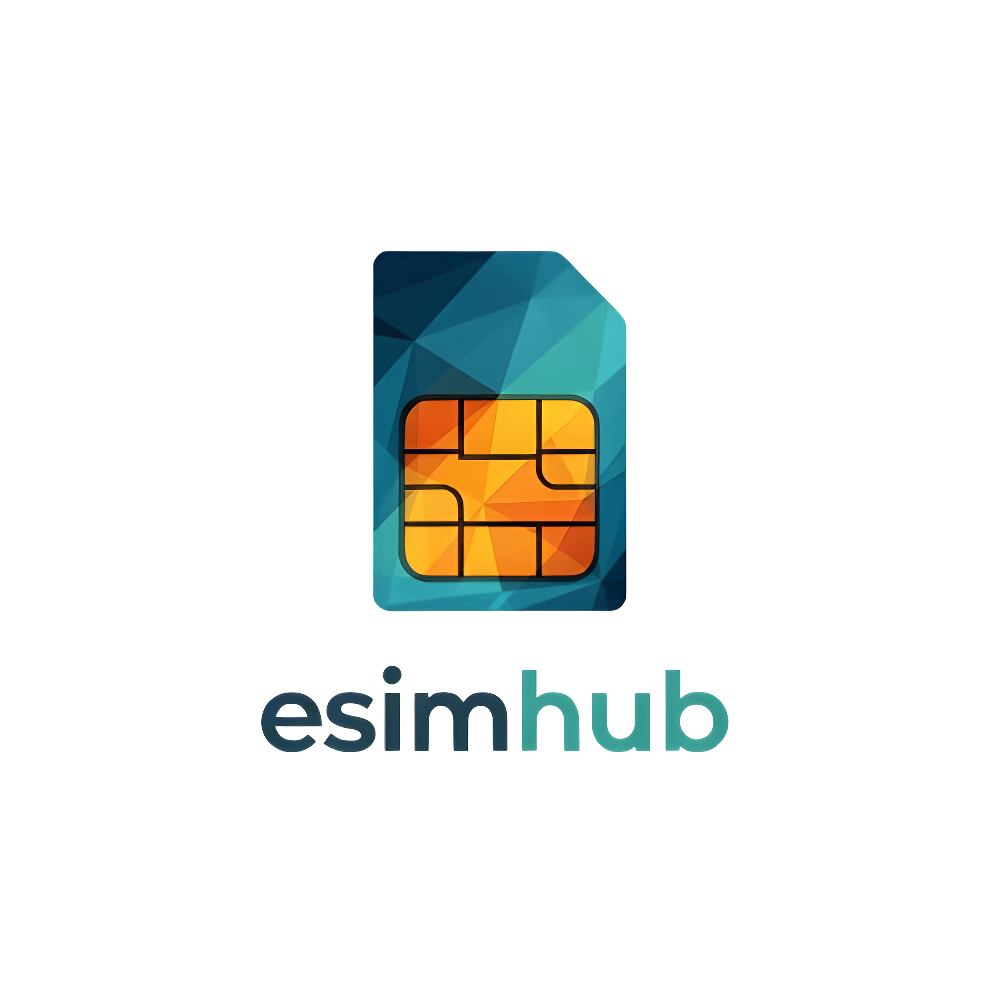eSIM Convenience: Real-World Examples
The transition from physical SIM cards to eSIM technology isn’t just a technical upgrade – it’s a leap forward. From seamless global adventures to enhanced personal and professional connectivity, eSIMs are quietly revolutionizing how we stay connected. Let’s explore some real-world scenarios where the advantages of eSIM truly shine. This using and operating your mobile phone while travelling easier than ever.
International Travel: eSIM Device Connection Without the Costs
The days of hunting for local SIM cards or facing costly roaming charges are over. eSIMs make international travel connectivity effortless.
Instant Connectivity on Arrival
Land in a new country and activate a local data plan with a few taps on your phone. No need to find a store, swap cards, or wait for activation. All you have to do is look up a local eSIM data plan. Select an eSIM plan from a local provider and activate it on your smartphone. Depending on whether you use android or IOS, setup can be easy.
Cost-Effective Communication
Easily compare and purchase affordable local or regional data packages, saving significantly on international roaming fees from your home carrier. Yes, with eSIM you don’t have to use international data roaming from your home provider. Just compare and select from your current local international provider and select an eSIM that suits your needs.

Managing Multiple Numbers On One eSIM Device
eSIM technology provides unparalleled flexibility for individuals needing more than one active phone number on a single device.
Seamless Work-Life Balance
You can keep your personal and work numbers separate on one esim device. This capability is particularly valuable for modern professionals. Gone are the days of using multiple phones. Now, you can have multiple numbers on one esim device (smart phone). This dual-profile or multiple esim profile functionality is allowing for a smoother work/life balance while cutting costs.
Dedicated Travel or Temporary Numbers
Quickly activate a temporary local number for a specific trip or project. This feature offers immense utility beyond just international travel. For instance, individuals working on short-term contracts or specific projects might require a local number for the duration. Similarly useful for online sales, classified ads, or any situation where you’d prefer not to share your primary contact. In this case, an eSIM device temporary enabled number provides an excellent solution for privacy and control. This means a number is easily disposable once its purpose is served.
Quick Carrier Switching: Unlocking Freedom and Better Deals
eSIMs empower consumers with the freedom to change mobile network operators without the physical hassle.
Effortless Plan Comparisons:
Browse and compare mobile plans from various providers directly on your esim device. You can then activate a new plan instantly if you find a better deal or more suitable inclusions.
(RSP) capabilities of the eUICC. The eUICC chip removes the need for a single, physical sim. Many eSIM providers offer intuitive mobile applications or online portals. These platforms allow users to browse available plans for various countries, regions, or even domestic use. These brands come complete with data allowances, validity periods, and pricing. Think players like Airalo, Holafly, or GigSky.
No More Physical Swaps or Lost SIMs:
Say goodbye to tiny trays, ejector tools, and the risk of losing or damaging a physical SIM card when changing providers. The eradication of the physical SIM card is a cornerstone of eSIM’s convenience, resolving numerous frustrations inherent in traditional mobile connectivity. For decades, managing cellular service involved dealing with increasingly smaller plastic cards (Mini, Micro, then Nano-SIMs) that required precise handling. These tiny components often necessitated a specialized SIM ejector tool to access the fiddly tray within a device. This manual process introduced several common pain points:
Ease of Loss
The minuscule size of Nano-SIMs made them incredibly easy to misplace, particularly when swapping cards in a busy airport or during device migration. A lost SIM meant immediate service disruption until a replacement could be acquired.
Risk of Damage
The delicate metal contacts on a physical SIM card were susceptible to scratches, bends, or static electricity, potentially rendering the card (and thus the service) inoperable. Furthermore, mishandling the SIM tray could damage the internal pins within the phone’s slot.
Inconvenience of Swapping: For frequent travelers, or those managing multiple numbers, constantly swapping physical SIM cards was a tedious and time-consuming chore. Each switch involved powering down the device, locating the tool, carefully extracting and inserting the cards, and then restarting.
With the eUICC being permanently embedded within the device, these physical impediments are entirely eliminated. The “SIM” becomes a digital profile managed through software, residing securely on the internal chip. This means there are no physical cards to lose, no trays to eject, and no tools to misplace. The user experience transforms from a fiddly, physical act to a seamless, digital one, enhancing reliability and user peace of mind.

Enhancing Wearable Device Independence
Smartwatches and other wearables are increasingly benefiting from eSIM integration, enabling true standalone functionality. This leap in connectivity transforms these compact devices from mere smartphone companions into powerful, independent communication and tracking tools. The embedded nature of eSIMs is particularly advantageous for wearables, where physical space for a SIM card slot is extremely limited, making them ideally suited for miniaturized, always-connected tech.
Calls and Notifications Without Your Phone
One of the most compelling advantages of eSIM in wearables is the liberation from constant smartphone tethering. With an activated eSIM profile, your smartwatch gains its own cellular connection. This means you can make and receive phone calls, send and receive messages. You can get crucial notifications directly on your wrist, even if your smartphone is left at home, in another room, or charging. This capability is invaluable for activities like exercising, short errands, or simply when you prefer to travel light. This ensures you remain reachable for emergencies or important communications without the bulk of a phone.
Location Tracking and Safety
Beyond communication, eSIM-enabled wearables significantly enhance personal safety and location tracking capabilities. For individuals engaging in fitness the embedded cellular connection means real-time GPS tracking can be shared if needed.
In critical situations, devices equipped with eSIM can automatically trigger emergency calls. You may also send distress signals with precise location data, even if the user is unable to reach their phone. This extends to safety for children or elderly family members. These discreet, always-on tracking devices or smartwatches with eSIM provide peace of mind through constant connectivity. They also give instant location updates to guardians.
Streamlined Setup for New Devices
Activating a new phone, tablet, or even certain laptops becomes significantly simpler and faster with eSIM technology. This digital approach to connectivity removes many of the traditional hurdles associated with getting a new device up and running, saving users time and hassle.
Instant Activation Out of the Box
Imagine purchasing a brand-new eSIM-enabled device. With traditional SIMs, you’d typically need to wait for a physical SIM card to be delivered, or make a trip to a carrier store. With eSIM, this is often eliminated. New eSIM-enabled devices can be activated almost instantly, right out of the box. You no longer have to insert a physical card. Now, your device can connect to a Wi-Fi network and then download your chosen carrier’s profile directly.. This process might involve scanning a QR code provided by your carrier, or simply following on-screen prompts from a carrier’s app. This seamless digital delivery means you can get connected and start using your new device much faster, without any delays due to physical logistics.
Easier Device Migration
Transferring your mobile service from an old, compatible device to a new one is also greatly simplified with eSIM. Unlike physical SIMs that require manual removal and insertion (often with an ejector tool), eSIM migration is digital. Many carriers now support eSIM Quick Transfer, letting you move your service to a new compatible device directly from settings, usually over Wi-Fi. Alternatively, the process might involve logging into your carrier’s app or website and initiating a digital transfer. Digital migration reduces setup time, avoids SIM loss or damage, and streamlines device upgrades.
Powering the Internet of Things (IoT) Evolution
The growth of the Internet of Things (IoT) depends on robust, flexible, and scalable connectivity. This is where eSIMs, powered by the eUICC, become truly indispensable. eSIMs are more than a SIM alternative—they’re essential for scaling and managing connected devices across industries. Without them, building a pervasively connected world would be far more complex and costly.
Remote Device Provisioning
One of the most critical advantages of eSIM in the IoT landscape is its capability for Remote Device Provisioning. In traditional IoT deployments using physical SIM cards, activating or changing a device’s network profile required a technician to physically access each device to swap out the SIM. This process is highly inefficient, costly, and often impractical for devices located in remote, hazardous, or large-scale environments.
With eSIM, the connectivity profile can be activated, updated, or even changed entirely over the air (OTA). This means that an IoT device, once powered on, can download its initial network profile or switch to a different mobile network operator (MNO) profile without any physical intervention. Imagine smart meters distributed across vast rural areas, environmental sensors in inaccessible wilderness, or industrial machinery deep within a factory. Remote provisioning significantly reduces operational expenses, eliminates the need for truck rolls, and accelerates deployment times, making the widespread adoption of IoT feasible and cost-effective.
Global IoT Deployment
eSIM technology dramatically simplifies the logistics associated with Global IoT Deployment for manufacturers and solution providers. Traditionally, a manufacturer creating an IoT device destined for various international markets would face a complex inventory challenge: they would need to stock different versions of their device, each pre-loaded with the specific physical SIM card for the target region’s MNOs. This led to increased warehousing costs, supply chain complexities, and potential delays.
With a single eUICC embedded within the device during manufacturing, this complexity vanishes. The device can be shipped to any part of the world with an “empty” but fully functional eUICC. Once deployed in its target region, the appropriate local or regional connectivity profile can be securely downloaded and activated remotely via the RSP (Remote SIM Provisioning) platform. This capability enables true global device stock-keeping unit (SKU) commonality, streamlines manufacturing processes, reduces logistics overhead, and provides unprecedented flexibility for deploying IoT solutions on a global scale. It allows businesses to adapt their connectivity strategy post-deployment, ensuring optimal coverage and cost efficiency wherever their devices operate.

Enhanced Durability and Device Design
The strategic decision to integrate the eUICC directly into a device’s internal architecture, eliminating the need for a physical SIM card slot, brings substantial benefits to both the durability and the aesthetic design of modern electronics. This fundamental change in form factor addresses several traditional vulnerabilities and unlocks new possibilities for device innovation.
Improved Water and Dust Resistance
One of the most significant advantages stemming from the absence of a physical SIM slot is the enhanced resistance to environmental damage. Traditional devices require an opening in their chassis for the SIM card tray, which, despite sealing efforts, remains a potential ingress point for water, dust, and other fine particles. These intrusions can lead to internal corrosion, short circuits, or performance degradation over time, ultimately shortening the device’s lifespan.
By soldering the eSIM directly onto the motherboard, manufacturers can design devices with fewer external apertures. This reduction in entry points significantly improves the device’s ability to resist water and dust penetration, contributing to higher IP ratings (Ingress Protection ratings). For users, this translates into more robust smartphones, tablets, and smartwatches that are better equipped to withstand accidental spills, sudden downpours, or dusty environments, thereby enhancing their longevity and reliability in daily use and adventurous conditions.
Sleeker and More Compact Devices
The removal of the physical SIM card slot, tray mechanism, and associated internal components frees up valuable internal real estate within a device. In the relentless pursuit of thinner, lighter, and more feature-rich electronics, every millimeter of space is precious. Manufacturers gain the flexibility to:
Create Thinner Designs: The saved space allows for the design of sleeker, more aesthetically pleasing devices that are more comfortable to hold and carry.
Integrate Larger Batteries: Alternatively, manufacturers can utilize the liberated space to embed larger battery cells, significantly improving battery life without increasing the device’s overall size.
This is particularly impactful for power-hungry features or for devices like smartwatches that benefit immensely from extended usage.
Add Advanced Features: The space saved by eSIMs enables integration of advanced components like better cameras, haptics, or sensors—driving innovation in portable devices that physical SIMs would otherwise limit.
Digital-First Customer Experience and Support
eSIM technology enables a modern, app-driven approach to customer service, aligning with consumer expectations for instant access, self-service, and remote support—improving user satisfaction and streamlining carrier operations.
Self-Service Account Management
The move to eSIM significantly empowers users by enabling robust self-service account management directly from their devices or online. Instead of requiring phone calls, store visits, or waiting for physical mail, consumers can now perform a wide array of account operations with unprecedented ease. This includes:
Plan Management: Users can browse, compare, and instantly switch between different data plans, add data top-ups, or change their subscription tiers via intuitive carrier applications or web portals. This eliminates friction and provides immediate control over their service.
Profile Switching: For devices supporting multiple eSIM profiles, users can effortlessly activate or deactivate different numbers or data plans directly within their phone’s settings, catering to diverse needs like separate work/personal lines or international travel.
Billing and Usage Monitoring: Real-time access to usage data, billing information, and payment options are standard features of these digital platforms, giving users complete transparency and control over their mobile expenditure.

This shift reduces the reliance on traditional customer service channels, empowering users to manage their mobile service at their own convenience, 24/7.
Instant Problem Resolution
Beyond proactive management, eSIM technology also facilitates instant problem resolution for a range of connectivity issues. In the era of physical SIM cards, a common problem like a faulty or corrupted SIM often necessitated a trip to a retail store for a replacement, or waiting for a new card to be mailed. This could lead to hours or even days of service downtime.
With eSIM, if a profile issue arises (e.g., a corruption, accidental deletion, or a network-side refresh requirement), the mobile carrier can often diagnose and resolve the problem remotely. They can push a refreshed eSIM profile to the device, or guide the user through a quick digital re-download process. This eliminates the need for physical interaction, drastically reducing service interruptions and enhancing the efficiency of support teams. The ability to push updates and manage profiles over the air means that many common connectivity issues can be fixed almost instantly, restoring service and minimizing inconvenience for the customer.
Return to home.
